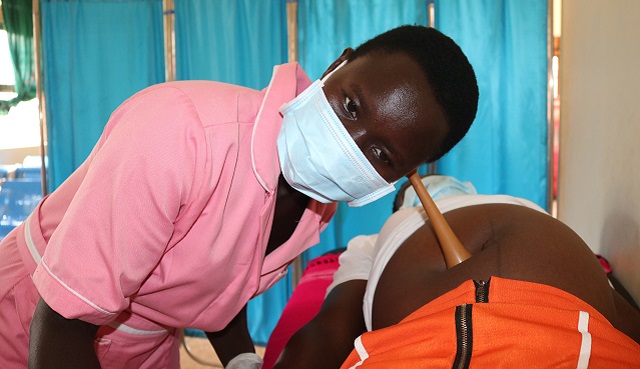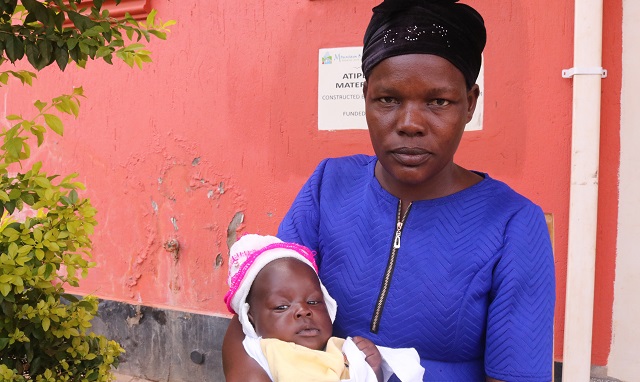
Every day in 2020, approximately 800 women died from preventable causes related to pregnancy and childbirth – meaning that a woman dies around every two minutes
COVER STORY | AGENCIES | Maternal health setbacks in many parts of the world have contributed to the worrying finding that a woman dies during pregnancy or childbirth around every two minutes, UN agencies said on Feb.23
According to a new report from the World Health Organisation (WHO), maternal deaths have either increased or stagnated nearly everywhere, from 223 maternal deaths per 100,000 live births in 2020, down from 227 in 2015 and 339 in 2000.
Sustainable Development Goal (SDG) target 3.1 is to reduce maternal mortality to less than 70 maternal deaths per 100 000 live births by 2030.
In November 2021, new Ending Preventable Maternal Mortality (EPMM) coverage targets were launched to meet the SDGs, and these were supplemented with a number of global, national and subnational EPMM indicators to highlight the need to increase coverage of quality maternal health care and improve women’s ability to make their own decisions about their sexual and reproductive health.
Unless progress is made on global targets for reducing maternal deaths – most of which are preventable – the lives of over one million more women by 2030 could be at risk, the WHO warned.
“Pregnancy … is tragically still a shockingly dangerous experience for millions around the world who lack access to high quality, respectful health care,” said Tedros Adhanom Ghebreyesus, the WHO Director-General.
“Childbirth should be a time of life, not death,” he said.
Tedros highlighted stark disparities in healthcare access in many regions and the urgent need “to ensure every woman and girl has access to critical health services before, during and after childbirth, and that they can fully exercise their reproductive rights.”
“The knowledge and practices for preventing maternal deaths have existed for decades, and yet far too many women – across huge swathes of the world – still lack access to these life-saving solutions. The situation is made worse for many communities by the impact of climate change and prolonged conflict, along with over-stretched health systems that lack essential supplies and medicines.
“We must start by recognizing where our health systems are failing. We must invest in fortifying our health workforce with the people, tools and training they need to deliver the quality care that will make a difference. Health systems must be held accountable for providing quality, respectful and equitable care through a well- trained and supported workforce and well-stocked shelves,” he said.
Furthermore, as the world slowly emerges from the COVID-19 pandemic which has highlighted that coronavirus infections can increase risks during pregnancy, the report’s authors stressed that more research will be needed to show the true impact of the global health emergency on maternal deaths.
Baby steps
The WHO-produced report, ‘Trends in Maternal Mortality,’ tracked maternal deaths nationally, regionally and globally from 2000 to 2020.
The United Nations Maternal Mortality Estimation Inter-Agency Group (MMEIG) – comprising WHO, the United Nations Children’s Fund (UNICEF), the United Nations Population Fund (UNFPA), the World Bank Group and the United Nations Department of Economic and Social Affairs, Population Division (UNDESA/Population Division) has collaborated with external technical experts on a new round of estimates covering 2000 to 2020. The estimates represent the most up to date, internationally-comparable MMEIG estimates of maternal mortality, using refined input data and methods from previous rounds.

It calculated 287,000 maternal deaths worldwide in 2020, which represented “only a slight decrease” from 309,000, in 2016. This was the case despite countries’ pledges in 2015 to implement the Sustainable Development Goals (SDGs), whose target is less than 70 maternal deaths per 100,000 live births by 2030.
Although the report indicated “some significant progress” in reducing maternal deaths between 2000 and 2015, gains largely stalled, or in some cases even reversed, after this point, its authors said.
Responding to the report’s findings, the UN Population Fund’s (UNFPA) Executive Director, Dr. Natalia Kanem, expressed alarm that “so many women continue to die needlessly in pregnancy and childbirth. Over 280,000 fatalities in a single year is unconscionable.”
Dr. Kanem added: “We can and must do better by urgently investing in family planning and filling the global shortage of 900,000 midwives so that every woman can get the lifesaving care she needs. We have the tools, knowledge and resources to end preventable maternal deaths; what we need now is the political will.”
Regional and country-level estimates for 2020
The report shows that global trends obscure large inequalities in maternal survival between regions of the world and countries within those regions. Looking at SDG regional groupings in 2020, sub-Saharan Africa was the only region with a very high Maternal Mortality Rates (MMR) – estimated at 545 maternal deaths per 100 000 live births. This is 136 times higher than the MMR in Australia and New Zealand where MMR was lowest.
From lowest to highest, the regions of Europe and Northern America (13), Eastern and South-Eastern Asia (74), Northern Africa and Western Asia (84), and Latin America and the Caribbean (88) all had low MMRs (below 100) in 2020. Sub-Saharan Africa alone accounted for approximately 70% of global maternal deaths in 2020, followed by Central and Southern Asia which accounted for almost 17%. These regional differences in the MMR correspond to substantial differences in the lifetime risk of dying from a maternal cause.
A 15-year-old girl in sub-Saharan Africa in 2020 has the highest lifetime risk (1 in 40) – approximately 400 times higher than in Australia and New Zealand (1 in 16,000). Only three sub-regions in the world had high or very high MMR in 2020, all of them in sub-Saharan Africa (Western Africa at 754, Middle Africa at 539 and Eastern Africa at 351).
According to the report, Rwanda had the least maternal deaths (1000) followed by Burundi (2,200), South Sudan (3800), and Uganda (4,700). Tanzania registered 5, 400 deaths, Kenya 7,700, Ethiopia 10,000, and DR Congo 22,000.
Conflict and poverty: a deadly cocktail
Among the report’s key findings is that maternal deaths remain largely concentrated in the poorest parts of the world and in countries affected by conflict.
In 2020, about 70 per cent of all maternal deaths were in sub-Saharan Africa. And in nine countries facing severe humanitarian crises, maternal mortality rates were more than double the world average (551 maternal deaths per 100,000 live births, compared to 223 globally).
In 2020, according to the Fragile States Index, nine countries were “very high alert” or “high alert” (from highest (most fragile) to lowest (least fragile): Yemen, Somalia, South Sudan, the Syrian Arab Republic, the Democratic Republic of the Congo, the Central African Republic, Chad, Sudan and Afghanistan), and these nine countries had MMRs ranging from 30 (the Syrian Arab Republic) to 1223 (South Sudan). The average MMR for “very high alert” and “high alert” fragile States in 2020 was 551 maternal deaths per 100,000 live births – over double the world average.
Three countries – all in sub-Saharan Africa – were estimated to have extremely high MMR in 2020 (over 1000): South Sudan (1223), Chad (1063) and Nigeria (1047). Only three countries with low MMR were in sub-Saharan Africa: Mauritius (84), Cabo Verde (42) and Seychelles (3).
Outside the sub-Saharan African region, only one country, Haiti, had a high MMR (350) and one country, Afghanistan, had a very high MMR (620) in 2020.
Nigeria had the highest estimated number of maternal deaths, accounting for over one quarter (28.5%) of all estimated global maternal deaths in 2020, with approximately 82,000 maternal deaths. Three other countries also had more than 10 000 maternal deaths in 2020: India (24, 000), the Democratic Republic of the Congo (22, 000) and Ethiopia (10, 000) – 8.3%, 7.5% and 3.6% of global maternal deaths, respectively.
Leading causes of death
The leading causes of maternal death are severe bleeding, high blood pressure, pregnancy-related infections, complications from unsafe abortion and underlying conditions that can be aggravated by pregnancy – such as HIV/AIDS and malaria.
“These are all largely preventable and treatable with access to high-quality and respectful healthcare,” the report’s authors stressed.

Additional data showed that roughly one-third of women do not receive four of the recommended eight antenatal checks or receive essential postnatal care, while some 270 million women lack access to modern family planning methods.
The report’s authors also stressed that inequality related to income, education, race or ethnicity “further increase risks for marginalized pregnant women, who have the least access to essential maternity care but are most likely to experience underlying health problems in pregnancy.”
The burden of HIV-related indirect maternal deaths in 2020 also varied substantially by region.
Sub-Saharan Africa accounted for the vast majority (92.5%) of the estimated 1,878 global HIV-related indirect maternal deaths in 2020. Globally, just four sub-regions had more than 100 HIV-related indirect maternal deaths in 2020, and those were the four sub-regions of sub-Saharan Africa: Eastern Africa (769), Western Africa (413), Middle Africa (332) and Southern Africa (224). Across all sub-regions, Southern Africa had by far the highest proportion of HIV-related indirect maternal deaths as a subset of all maternal deaths (10.3%), followed by Eastern Africa (1.5%).
What needs to be done
According to the report authors, in the remaining years of the SDG era, multi-sectoral action is required to target the causes of maternal mortality. This is essential to achieve not only SDG target, but also related commitments in SDGs1 (no poverty), 3 (good health and well-being), 5 (gender equality) and 10 (reduced inequality).
The report authors recommend that first, greater recognition and collective action is needed to address systemic health system issues that impede access to safe, quality, respectful and affordable sexual and reproductive health care.
“This is integral to safeguarding sexual and reproductive health and rights, and critical to improving institutional trust and the use of sexual and reproductive health services,” the report says.
It adds that improving access to quality care requires health system strengthening to increase the numbers of well trained and well supervised health workers, tackle shortages of essential medical supplies, and improve the accountability of health systems to the rights of women and girls.
Second, the report notes, a lack of access to care and poor quality of care disproportionately affect already socially marginalized women and girls.
“Interventions must recognise and address social determinants of maternal health, including ethnicity, age, disability, and socioeconomic inequalities, which impede women’s access to and use of sexual and reproductive health services,” the report says.
It adds: “Achieving universal health coverage (UHC) – SDG target 3.8 – is critical to ensure these services are affordable and that their costs do not cause financial hardship. The 2018 Declaration of Astana identified primary health care as the most cost-effective and inclusive means of achieving UHC.”
Thirdly, improving maternal health requires intersectoral action from a stronger gender and human-rights perspective to improve women’s empowerment, eliminate poverty and reduce gender-based inequality.
“Gender-sensitive interventions are essential to address ingrained inequalities and achieve gender justice in health,” it says.
The last recommendation is that multisectoral approaches are urgently needed to build health system resilience to climate and humanitarian crises.
“We must use the remaining time in the SDG period to intensify action to mitigate and adapt to the devastating effects of climate change to safeguard and improve maternal health; this action is also integral to climate justice,” it says.
According to the authors, as the world approaches the mid-point of the SDG era, there is still time to mobilise and invigorate global, regional, national, and community-level commitment to the wide-ranging objectives and targets, including the renewing of the commitment to end preventable maternal mortality, and to ensure women not only simply survive a pregnancy but are healthy and thrive.
 The Independent Uganda: You get the Truth we Pay the Price
The Independent Uganda: You get the Truth we Pay the Price


